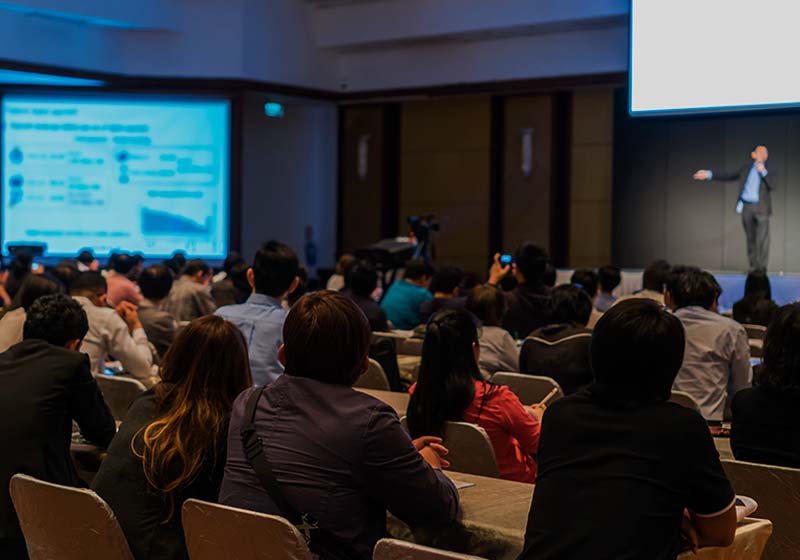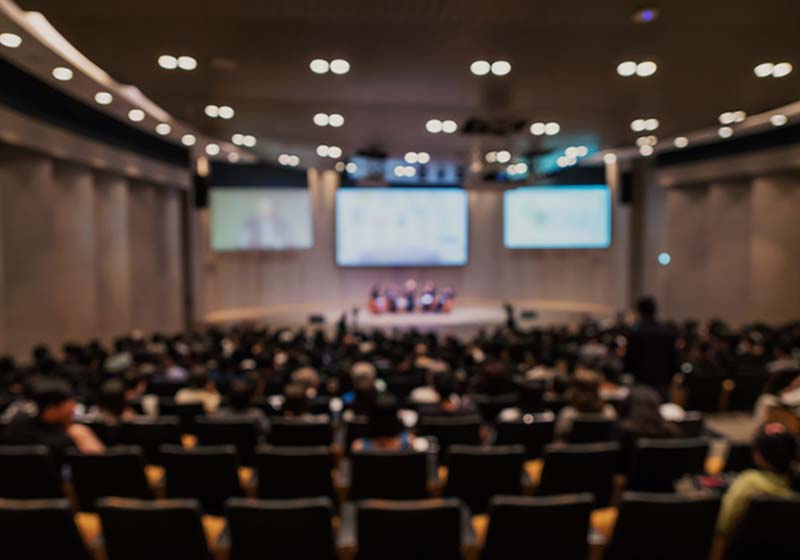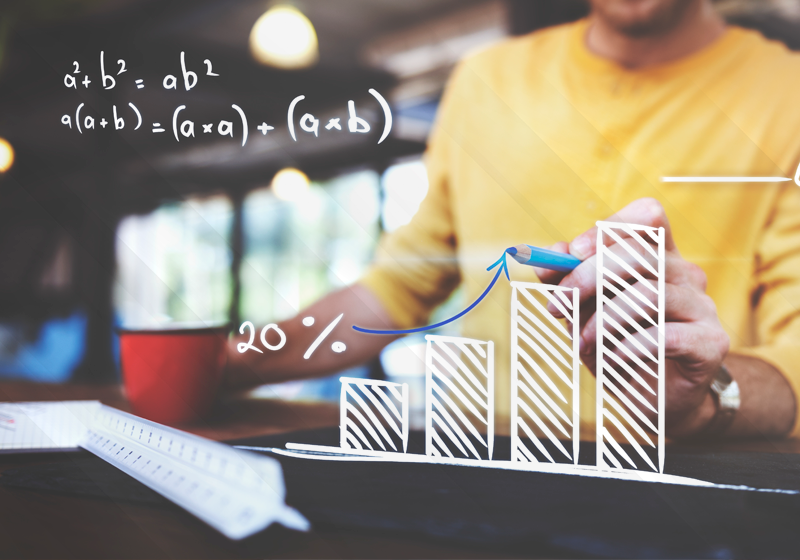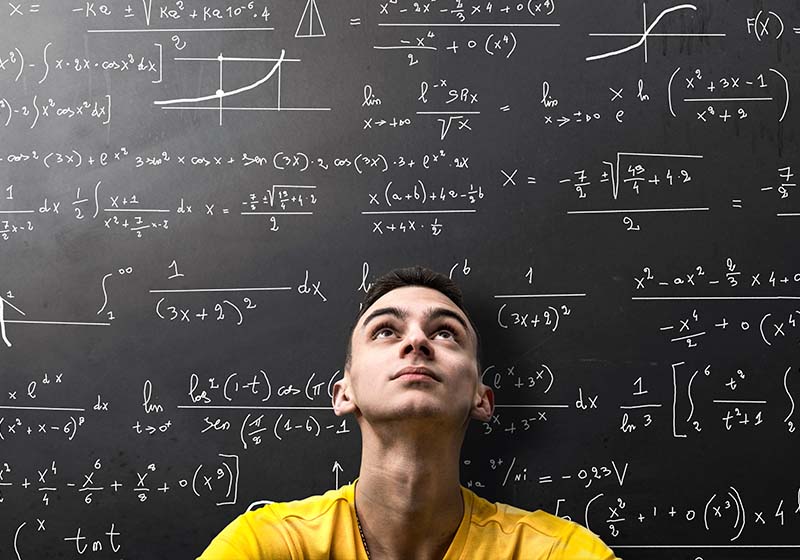 Título: Stochastic Billiards with Markovian reflection in generalized parabolic domains
Título: Stochastic Billiards with Markovian reflection in generalized parabolic domains
Palestrante: Conrado Costa (Durham University)
Data: 16/05/2022
Horário: 15:30h às 16:30h (Rio de Janeiro local time)
Local: Sala B106 – Bloco B - CT – Instituto de Matemática – UFRJ.
Não haverá transmissão online.
Resumo: In this talk, we consider a particle moving linearly inside generalized parabolic domain with Markovian reflection at the boundary. Our goal is to determine, with respect to the reflection law, when the process is recurrent or transient. The central idea, which applies a class of non-homogeneous random walks, is to find a Lyapunov function for the properly rescaled version of the problem. Next, we employ supermartingale methods to identify, given the reflection kernel, a phase transition, from recurrent to transient, as we change a single geometric parameter of the region for these stochastic billiards. The solution of this problem is done via a translation to a broad class of almost Markovian models, the half-strip models, and makes use of some tools from functional analysis.
This is a joint work with Mikhail Menshikov and Andrew Wade.
Organizadores: Giulio Iacobelli e Maria Eulália Vares
Todas as palestras são realizadas em Inglês.
Informações mais completas sobre os seminários estão disponíveis AQUI.
Aqueles que não desejarem receber nossos próximos comunicados, podem enviar um e-mail para eulalia@im.ufrj.br pedindo para ser removido da lista.
 Título: Generalized many-dimensional excited random walk in Bernoulli environment
Título: Generalized many-dimensional excited random walk in Bernoulli environment
Palestrante: Rodrigo Barreto Alves (FGV-EMap)
Data: 09/05/2022
Horário: 15h às 16h (Rio de Janeiro local time)
Local: Transmissão online
Confira AQUI o link para a transmissão.
Resumo: We study an extension of the generalized excited random walk (GERW) on Z^d introduced in [{\em Ann. Probab. 40 (5), 2012}}] by Menshikov, Popov, Ramírez and Vachkovskaia.
Our extension consists in studying a version of the GERW where excitation may/may not occur according to a time-dependent probability. Specifically, given a sequence of parameters {p_n}_{n > 0}, with p_n in (0, 1] for all n > 0, whenever the process visits a site at time n for the first time, with probability p_n it gains a drift in a given direction (could be any direction of the unit sphere). Otherwise, with probability 1-p_n, it behaves as a d-martingale with zero-mean vector. Whenever the process visits an already-visited site, the process acts again as a $d$-martingale with zero-mean vector. We refer to the model as a GERW in Bernoulli environment, in short p_n-GERW. Under the same hypothesis of bounded jumps, uniform ellipticity and with a sequence {p_n\}_{n > 0} which decays polynomially, namelly p_n = Cn^{-\beta} with \beta > 0 and C is a positive constant, we show a series of results for the p_n-GERW depending on the value of \beta and on the dimension. Specifically, for \beta < 1/6 and d > 1, we show that the p_n-GERW has a positive probability of never returning to the origin in the drift direction, for \beta > 1/2, d > 1$ and \beta=1/2 and d=2 we obtain, under certain conditions, a Functional Central Limit Theorem. Finally, for \beta=1/2 and d > 3 we obtain, under suitable conditions, that the p_n-GERW is a tight process, and all sub-sequences converge, in distribution, to a process which is stochastically dominated in the drift direction below and above by a Brownian Motion plus a continuous function.
Todas as palestras são realizadas em Inglês.
Informações mais completas sobre os seminários estão disponíveis AQUI.
 Título: Generalized Excited Random Walk in Bernoulli Environment
Título: Generalized Excited Random Walk in Bernoulli Environment
Palestrante: Rodrigo Barreto Alves
Orientadores: Glauco Valle e Giulio Iacobelli
Data: 28/04/2022
Horário: 10:00h
Local: Transmissão Online
Confira AQUI o link para a transmissão
ID da reunião: 893 7038 8725
Senha de acesso: 537957
Banca Examinadora:
Maria Eulália Vares, UFRJ
Guilherme Ost, UFRJ
Luiz Renato Fontes, USP
Christophe Frédéric Gallesco, Unicamp
Augusto Quadros Teixeira, IMPA
 Título: Revisitando o 4º Problema de Hilbert no contexto da teoria de subvariedades mínimas
Título: Revisitando o 4º Problema de Hilbert no contexto da teoria de subvariedades mínimas
Palestrante: Lucas Ambrozio - IMPA
Data: 06/05/2022
Horário: 13:00h
Local: Sala C-116
Resumo: Como quarto problema de sua famosa lista, e motivado por suas investigações sobre os fundamentos da Geometria, David Hilbert propôs o problema de estudar geometrias no plano e no espaço nas quais os segmentos de reta são precisamente as curvas que minimizam o comprimento dentre todas as curvas ligando suas extremidades. Pode-se entender este problema como um problema inverso de caráter geométrico-variacional: procura-se recuperar uma geometria a partir do conhecimento de suas geodésicas minimizantes. Nesta palestra, revisitaremos brevemente a história deste problema, com o propósito de discutir suas possíveis generalizações no contexto da teoria de subvariedades mínimas. Em particular, mostraremos que, mesmo dentre as geometrias Riemannianas, há uma riqueza de exemplos de tais geometrias que merece ser investigada mais sistematicamente. Alguns dos resultados de classificação que explicaremos são parte de um projeto em conjunto com F. Codá (Princeton) e A. Neves (UChicago).
 Titulo: Turbulent Circulation Statistics: Recent Advances and Perspectives
Titulo: Turbulent Circulation Statistics: Recent Advances and Perspectives
Data: 29/04/2022
Horário: 13:00
Local: Sala C-116
Palestrante: Luca Moriconi, Instituto de Física - UFRJ
Resumo: Improvements of high performance computing platforms have paved the way for the very recent implementation of numerical simulations of homogeneous and isotropic turbulence at unprecedented high Reynolds numbers. They have brought to light completely new aspects of turbulence, mainly related to the statistical description of velocity circulation fluctuations. Motivated by these advances, we discuss a fruitful phenomenological model of circulation intermittency which combines structural ingredients of turbulence (the existence of vortex tubes) and its multiplicative cascade nature (related to the transfer of kinetic energy across a broad range of length scales). Besides a number of predictions which accurately agree with numerical findings on the statistical features of circulation, the vortex gas model is able to address the short-distance physics of interacting vortex structures. We furthermore outline open modeling issues which have interesting connections to field-theoretical approaches and minimal surface theory.
